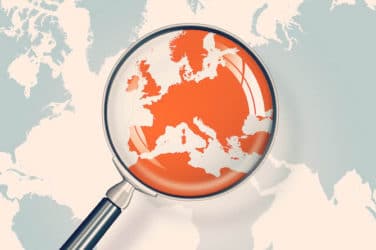
Fund managers still prefer high-touch, rather than electronic, execution for more than a third of US cash equities and non-US cash equities according to new research.
Consultancy Aite Group said in a report Buy-Side Front-Office Trends: The ABCs of Trading Behavior that it is “mildly surprising” that high-touch execution styles are still preferred by investors for as much as 38% of US cash equities and 41% of non-US cash despite equities having the longest history of electronic trading and the earliest adoption of algorithms.
High-touch typically involves agency execution with discretion, principal/capital commitment and investors requesting a direct quote over the phone from a sales trader or passing an agency order for them to work.
“This may partially be explained by the increasing complexity associated with market fragmentation in the US equities market and the proliferation of dark pools and exchanges, all competing for order flow,” added Aite. “Average trade sizes have shrunk to less than 200 shares per trade, typically a small fraction of total order size. And at the same time, there continues to be challenges with sourcing liquidity for mid- and small-cap stocks.”
As a result, sales traders remain relevant in assisting with trade facilitation and intermediating an agency block trade between two buyside customers with opposite sides of an equities trade.
Sales traders are also sometimes asked to intervene in algorithmic orders, although intervention or suspension are both very rare. For example, human intervention may be required if intraday market conditions, such as extreme volatility, affect an algorithm’s performance.
However, the study also found that electronic trading continues to gain its footing across all asset classes at a steady pace across the globe. Therefore investors investors need to continue in invest in upgrading technology to find new sources of alpha, comply with new regulations, cut costs and increase efficiency. “The days of phone-based or plain vanilla chat-enabled trading are numbered,” added Aite.
Commodities is the only instrument type in which all trades were executed as high-touch while futures contracts were frequently traded through self-directed electronic execution styles.
The survey showed zero adoption of broker-provided algorithms for over the counter derivatives and physical commodities markets, primarily due to the lack of standardization in the instrument itself and the extreme shortage of liquidity and highly fragmented market structure. In cash fixed income, only 22% of trading is via broker-provided algorithms, most likely all in US treasuries.
“Buy-side trading desks still seem to be in wait-and-see mode when it comes to electronic trading of many non-equities instruments,” said Aite. “Market structure and tool sets need to mature for many illiquid instruments in order to deliver the transparency and automation pervasive for institutional trading in the equities markets.”
Aite carried out on an online survey of 42 buyside firms throughout the second half of last year, with the majority of firms managing assets of more than $50bn.






